
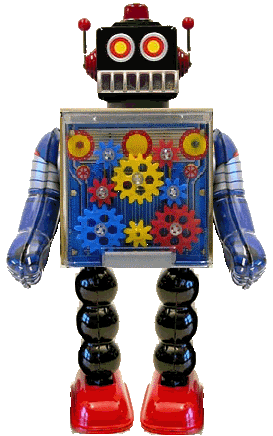 Robotics are developed man-made mechanical devices that can
move by themselves, whose motion must be modelled planned, sensed,
actuated and controlled, and whose motion behaviour can be influenced
by “programming”. Robots are called “intelligent” if they succeed in moving in
safe interaction with an unstructured environment, while autonomously achieving
their specified tasks. Robotics is, to a very large extent, all about
system integration, achieving a task by an actuated mechanical device, via an
“intelligent” integration of components, many of which it shares with other
domains, such as systems and control, computer science, character animation,
machine design, computer vision, artificial intelligence, cognitive science,
bio mechanics, etc. In addition, the boundaries of robotics cannot be clearly
defined, since also its “core” ideas, concepts and algorithms are being applied
in an ever increasing number of “external” applications, and, vice verse, core
technology from other domains (vision, biology, cognitive science or bio
mechanics, for example) are becoming crucial components in more and more modern
robotic systems.
Robotics are developed man-made mechanical devices that can
move by themselves, whose motion must be modelled planned, sensed,
actuated and controlled, and whose motion behaviour can be influenced
by “programming”. Robots are called “intelligent” if they succeed in moving in
safe interaction with an unstructured environment, while autonomously achieving
their specified tasks. Robotics is, to a very large extent, all about
system integration, achieving a task by an actuated mechanical device, via an
“intelligent” integration of components, many of which it shares with other
domains, such as systems and control, computer science, character animation,
machine design, computer vision, artificial intelligence, cognitive science,
bio mechanics, etc. In addition, the boundaries of robotics cannot be clearly
defined, since also its “core” ideas, concepts and algorithms are being applied
in an ever increasing number of “external” applications, and, vice verse, core
technology from other domains (vision, biology, cognitive science or bio
mechanics, for example) are becoming crucial components in more and more modern
robotic systems.
Created by Crazyprofile.com

 Robots are a great way to inspire students to learn about maths, science, and technology.It is an educational program designed with the intention to create a space where the children and girls begin in the study of the science and the technology, based on this natural desire that the children and girls show to interact with the technology and specially with that one that it allows to him or hers to create in a innovative way.Click here to read more
Robots are a great way to inspire students to learn about maths, science, and technology.It is an educational program designed with the intention to create a space where the children and girls begin in the study of the science and the technology, based on this natural desire that the children and girls show to interact with the technology and specially with that one that it allows to him or hers to create in a innovative way.Click here to read more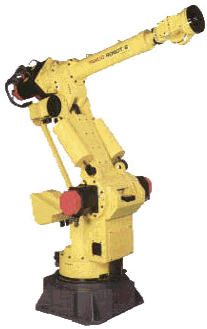
Modern industrial robots are true marvels of engineering. A robot the size of a person can easily carry a load over one hundred pounds and move it very quickly with a repeatability of +/-0.006 inches. Furthermore these robots can do that 24 hours a day for years on end with no failures whatsoever. Though they are reprogrammable, in many applications (particularly those in the auto industry) they are programmed once and then repeat that exact same task for years.
A six-axis robot like the yellow one below costs about $60,000. What I find interesting is that deploying the robot costs another $200,000. Thus, the cost of the robot itself is just a fraction of the cost of the total system. The tools the robot uses combined with the cost of programming the robot form the major percentage of the cost. That's why robots in the auto industry are rarely reprogrammed. If they are going to go to the expense of deploying a robot for another task, then they may as well use Click here to read

.
Created by Crazyprofile.com
A number of researchers have embraced the idea of miniature robots working together in swarms. Doug Adkins and Ed Heller developed the robot at left at Sandia National Lab. At 1/4 cubic inch and weighing less than an ounce, it is possibly the smallest autonomous untethered robot ever created. Powered by three watch batteries, it rides on track wheels and consists of an 8K ROM processor, temperature sensor, and two motors that drive the wheels. Enhancements being considered include a miniature camera, microphone, communication device, and a chemical micro-sensor.Click here to read


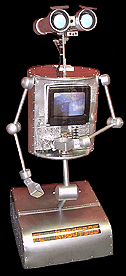
Some entertainment robots are not much more than rolling, remote-controlled speaker phones with video camera "eyes." They can wander around at parties and play pre-recorded jingles or display scrolling messages to promote a company's products or distribute promotional literature.
Florida Robotics makes robots like these. They also make more complex robots that have the capability to talk with on-lookers and include fiber optic hair, remote controlled water guns, on-board video camera and transmitter (robot can send video of what he sees to remote monitor or video wall), sound effects and smoke.


Disney makes use of a Florida Robotics robot called "X1846" at Walt Disney World in Orlando, Florida. X1846 serves drinks there. Heck, I'll take a robot that can bring me a soda. Click here to read


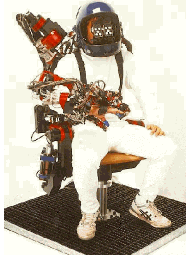
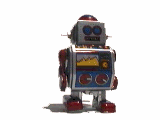
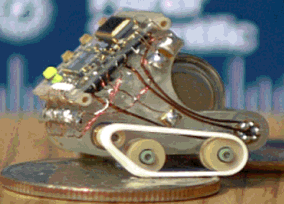




No comments:
Post a Comment